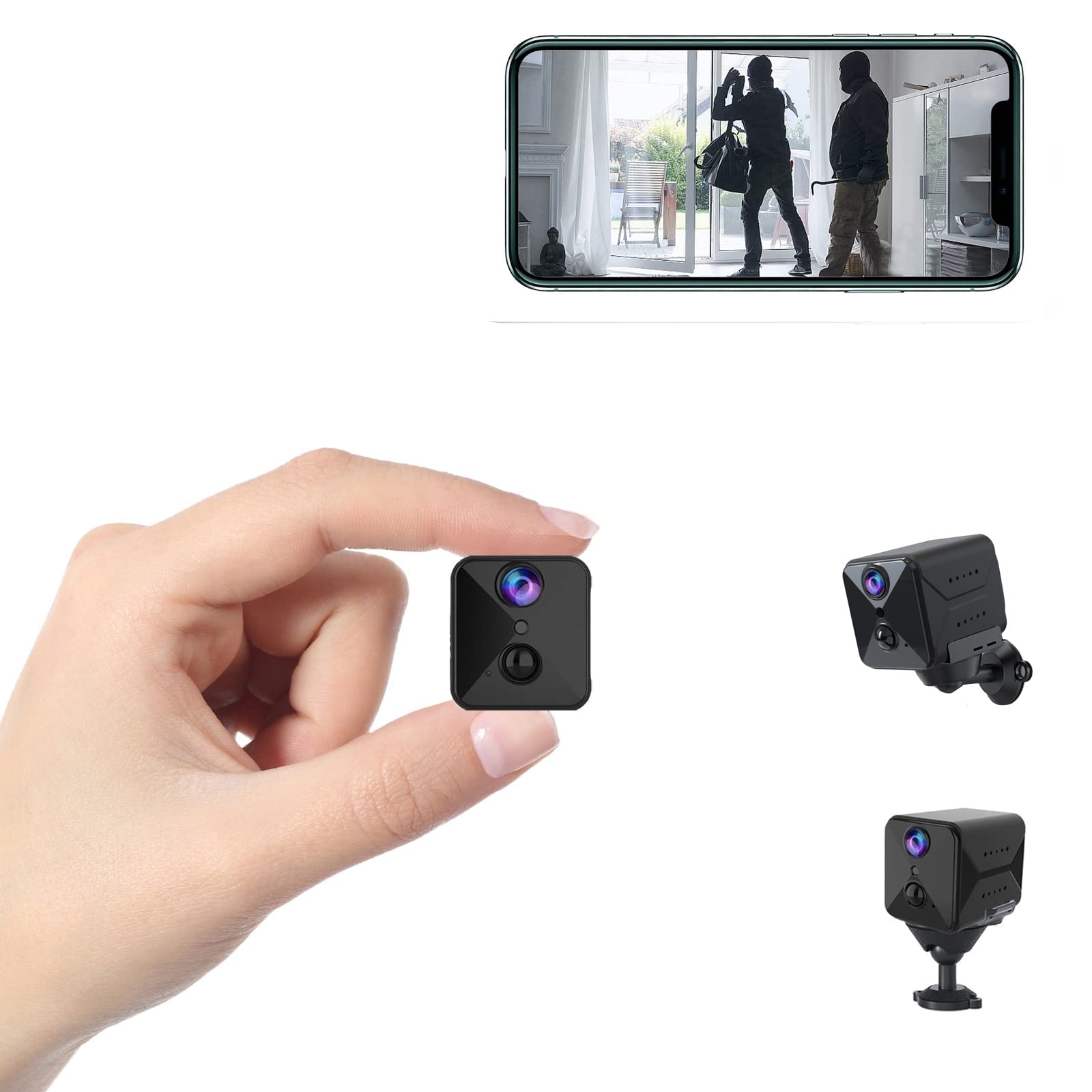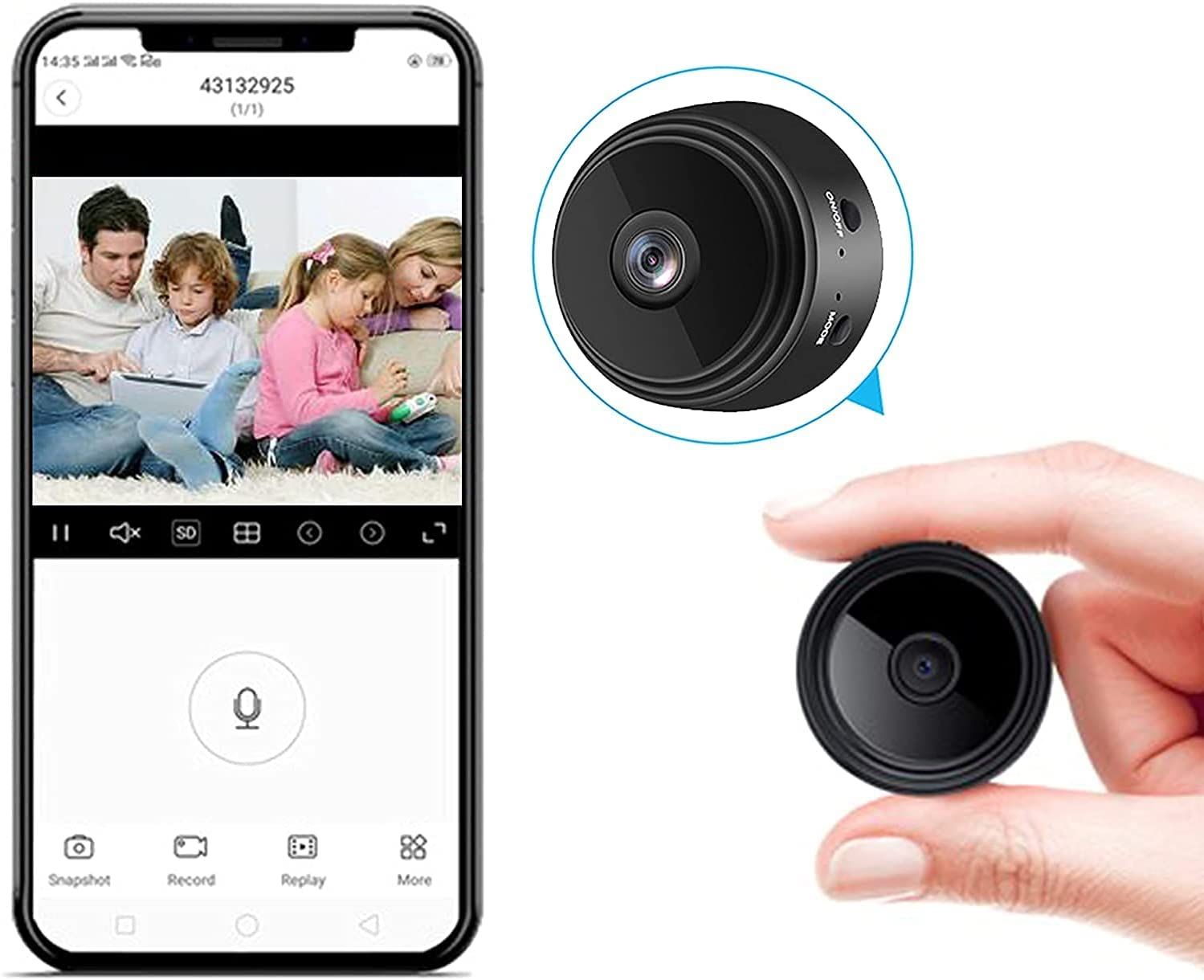Introduction
Welcome to our guide on how to detect spy apps on an Android phone. In today’s digital age, smartphones have become an integral part of our daily lives, allowing us to stay connected, navigate, and access a wealth of information with just a few taps. However, with this convenience comes the risk of privacy invasion, especially through the use of spy apps.
Spy apps are software applications that can secretly monitor and track various activities on your Android phone, such as call history, message content, location, and even keystrokes. While these apps may have legitimate uses for parental monitoring or employee oversight, they can also be misused for malicious purposes, such as stalking or obtaining sensitive information.
Being unaware of a spy app on your Android phone can compromise your privacy and security. Therefore, it is crucial to understand how to detect and remove these apps if you suspect their presence.
In this guide, we will explore the signs that may indicate the presence of a spy app on your Android phone and provide you with various methods to detect and remove them effectively.
It is important to note that while these methods can help you in identifying and removing spy apps, it is always advisable to seek professional assistance or legal counsel if you suspect any illegal activities or if you are unsure about your findings.
Now, let’s dive into the world of spy app detection and learn how to secure your Android phone from potential privacy breaches.
What are spy apps?
Spy apps, also known as surveillance apps or monitoring apps, are software applications that are designed to secretly monitor and track various activities on a target device, such as an Android phone. They are usually installed by someone who wishes to monitor the device owner’s activities without their knowledge or consent.
These apps typically operate in the background, discreetly collecting information without showing any visible signs of their presence. They can track a wide range of activities, including call logs, text messages, social media activity, GPS location, browsing history, and even keystrokes.
While some spy apps are marketed for legitimate purposes, such as parental control or employee monitoring, they can also be used for unethical or illegal activities. For example, an abusive partner may install a spy app on their significant other’s phone to monitor their movements and conversations without their consent. Employers may use these apps to monitor their employees’ activities outside of work hours, which can infringe on their privacy rights.
There are different types of spy apps available, ranging from commercial software with extensive monitoring capabilities to stealthy apps developed by hackers or cybercriminals. The more sophisticated spy apps can bypass security measures, such as antivirus software, making them difficult to detect.
It is important to understand that the use of spy apps without the knowledge and consent of the device owner is a violation of privacy laws in many jurisdictions. It is crucial to respect individuals’ privacy rights and use surveillance apps responsibly and legally.
In the following sections, we will explore the signs that may indicate the presence of a spy app on your Android phone and provide you with effective methods to detect and remove them.
Why should you be concerned about spy apps?
The presence of spy apps on your Android phone can have serious implications for your privacy, security, and overall well-being. Here are some reasons why you should be concerned:
1. Invasion of privacy: Spy apps allow someone to monitor your private conversations, messages, and activities without your knowledge or consent. This intrusion into your personal life can cause feelings of violation, anxiety, and loss of trust.
2. Personal safety risks: With access to your location, spy apps can potentially enable stalkers or malicious individuals to track your movements and place you in dangerous situations.
3. Exposure of sensitive information: Spy apps can collect sensitive data, including passwords, financial details, and personal information. This information can be used for identity theft, fraud, or other malicious purposes.
4. Misuse of personal information: Data collected by spy apps can be misused for extortion, blackmail, or as leverage in personal or professional relationships. It can lead to emotional manipulation and damage your reputation.
5. Breach of confidentiality: If you use your Android phone for work-related communications, a spy app can compromise confidentiality and intellectual property. This can have serious consequences for your career and professional relationships.
6. Psychological impact: Being under surveillance can lead to increased stress, paranoia, and a constant feeling of being watched. It can negatively impact your mental health and overall well-being.
7. Legal implications: The use of spy apps without the consent of the targeted individual is illegal in many jurisdictions. Engaging in such activities can result in legal consequences and damage your reputation.
It is crucial to be aware of the potential risks posed by spy apps and to take proactive measures to protect your privacy and security.
In the following sections, we will discuss various signs that may indicate the presence of a spy app on your Android phone and provide you with effective methods to detect and remove them.
Signs that your Android phone may have a spy app
If you suspect that your Android phone has been compromised with a spy app, it is important to look out for certain signs that may indicate its presence. While these signs are not definitive proof, they can serve as red flags and prompt further investigation. Here are some common signs to watch out for:
1. Unusual battery drain: If you notice a sudden and significant decrease in your phone’s battery life, even when you haven’t been using it extensively, it could be a sign that a spy app is running in the background.
2. Increased data usage: Spy apps often run in the background and silently transmit data to the person monitoring the device. This can result in an increase in data usage on your phone, even if your usage habits haven’t changed.
3. Sudden changes in phone behavior: Pay attention to any unexpected behaviors of your phone, such as random reboots, freezing, or delays. Spy apps can interfere with your phone’s normal functioning, leading to these unusual behaviors.
4. Strange noises during calls or background noise: If you hear strange noises, echoes, or static during phone calls, it could indicate that your conversations are being recorded or monitored. Additionally, if you frequently hear background noises on calls when you shouldn’t, it could be a sign of eavesdropping.
5. Unusual app behavior: Keep an eye out for any strange or unexplainable behavior from your apps. Spy apps may interfere with the normal functioning of other applications on your phone, causing crashes or errors.
6. Increased data usage: Spy apps often run in the background and silently transmit data to the person monitoring the device. This can result in an increase in data usage on your phone, even if your usage habits haven’t changed.
7. Overheating: If your phone becomes unusually hot to the touch, even when you’re not using it for resource-heavy tasks, it could indicate that a spy app is running in the background and consuming system resources.
8. Suspicious app icons: Look out for any unfamiliar or suspicious app icons on your home screen or app drawer. Some spy apps try to hide their presence by using generic or inconspicuous icons.
9. Phone acting slow: If your phone’s performance has significantly decreased, such as slower response times or lagging, it could be a sign of a spy app running in the background and consuming system resources.
10. Increased data usage: Spy apps often run in the background and silently transmit data to the person monitoring the device. This can result in an increase in data usage on your phone, even if your usage habits haven’t changed.
Keep in mind that these signs can also be attributed to other factors, such as software glitches or a need for a battery replacement. However, if you notice multiple signs occurring simultaneously, it is worth investigating further to determine if a spy app is present on your Android phone.
In the following sections, we will provide you with various methods to detect and remove spy apps from your Android device.
Method 1: Analyzing your phone’s behavior and performance
One of the first steps in detecting a spy app on your Android phone is to analyze its behavior and performance. This method involves monitoring your phone for any unusual activities or changes that could indicate the presence of a spy app. Here’s how you can do it:
1. Observe battery drain: Pay attention to your phone’s battery life. If you notice a sudden and significant decrease in battery life, especially when your phone is idle or not in use, it could be a sign that a spy app is running in the background.
2. Monitor data usage: Keep an eye on your phone’s data usage. Spy apps often rely on constant data transmission to send the collected information to the monitoring entity. If you notice an abnormal increase in data usage, it could indicate the presence of a spy app.
3. Check for unusual behaviors: Take note of any unusual behaviors exhibited by your phone, such as sudden freezes, slow response times, or random reboots. Spy apps can interfere with your phone’s normal functioning, leading to these abnormal behaviors.
4. Examine call quality: Pay attention to the quality of your phone calls. If you hear strange noises, echoes, or static during conversations, it could indicate that your calls are being intercepted or monitored by a spy app.
5. Note any overheating: If your phone becomes excessively hot to the touch, even when you’re not using it for resource-intensive tasks, it could be a sign that a spy app is running in the background and consuming system resources.
6. Monitor app performance: Keep an eye on how your apps are performing. If you notice frequent crashes, errors, or slow loading times, it could be a sign that a spy app is interfering with the normal functioning of other applications on your phone.
7. Analyze network connections: Check the network connections on your phone. If you see unfamiliar or suspicious connections, it could indicate that a spy app is establishing remote connections to transmit data.
By thoroughly analyzing your phone’s behavior and performance using these methods, you can identify any abnormal activities that may point towards the presence of a spy app. However, it’s important to note that these signs can also be caused by other factors, such as software glitches or outdated hardware.
In the upcoming sections, we will delve into other methods that can help you detect and remove spy apps from your Android device.
Method 2: Checking for suspicious apps in your app list
Another effective method to detect spy apps on your Android phone is by examining your app list for any suspicious or unfamiliar applications. Spy apps often hide behind deceptive names or icons to avoid detection, but with careful inspection, you can identify their presence. Here’s how you can check for suspicious apps:
1. Navigate to the app list: Open the settings menu on your Android phone and look for the “Apps” or “Applications” option. Tap on it to access the list of all installed apps on your device.
2. Examine the app names: Review the names of the installed apps. Look for any apps that have generic, misspelled, or strange names. Spy apps often use inconspicuous names to hide their true purpose.
3. Check for unfamiliar apps: Take note of any apps that you don’t remember installing or that you don’t recognize. Spy apps are commonly installed without the knowledge or consent of the device owner, so any unfamiliar apps should raise suspicions.
4. Assess app permissions: Tap on each app and examine the permissions it has been granted. Spy apps often require extensive permissions to monitor various activities on your phone, such as access to your contacts, call logs, messages, and location.
5. Read user reviews: If you come across a suspicious app, read the user reviews and ratings on the Google Play Store or other app marketplaces. Look for any red flags mentioned by other users, such as intrusive behavior or suspicious activities.
6. Research the app: If you are still unsure about the legitimacy of an app, conduct a quick internet search to gather more information. Look for any reports or articles that discuss the app’s functions, potential privacy concerns, or known associations with spyware.
7. Trust your instincts: If something feels off about an app, trust your intuition. If you suspect an app to be a spy app, it is better to err on the side of caution and uninstall it.
Remember, spy apps can sometimes hide their true nature and masquerade as harmless or legitimate applications. Therefore, it is important to be vigilant and thorough in your examination of the installed apps on your Android phone.
In the upcoming sections, we will explore additional methods that can assist in detecting and removing spy apps from your Android device.
Method 3: Reviewing battery usage
An effective method to detect the presence of spy apps on your Android phone is by reviewing the battery usage of your device. Spy apps can run silently in the background, consuming significant amounts of battery power. By analyzing battery usage, you can identify any apps that are draining your battery excessively and potentially uncover a hidden spy app. Here’s how you can review your battery usage:
1. Open the Settings menu: Access the settings menu on your Android phone by tapping on the gear-shaped icon in the app drawer or the notification panel.
2. Locate the Battery section: Look for the “Battery” option in your phone’s settings menu. The exact location may vary depending on your Android version or device model.
3. Analyze battery usage: Tap on “Battery” to view a breakdown of the apps and services consuming battery power on your device. The apps will be listed in descending order based on their battery usage.
4. Look for unusual battery drain: Pay attention to any apps that are consuming a significant amount of battery power, especially if they are apps that you rarely use or have never seen before.
5. Check for spyware-related apps: While spy apps may not explicitly reveal their presence, you can look for suspicious app names or icons that might indicate their existence. Look for any unfamiliar or generic-looking apps in the battery usage list.
6. Assess background activity: Some spy apps run discreetly in the background, performing data collection and transmission. Check if any apps are consuming excessive battery power in the background, even when you’re not actively using them.
7. Investigate further: If you identify an app with unusual battery drain or suspicious behavior, you can dig deeper by exploring the permissions it has been granted and researching its purpose online. User reviews and reports can provide insights into any potential privacy concerns or suspicious activities associated with the app.
By reviewing your battery usage and identifying any apps that exhibit unusual drain or suspicious behavior, you increase your chances of uncovering a hidden spy app on your Android phone. However, keep in mind that unusual battery drain can also be caused by other factors, such as software glitches or resource-intensive tasks.
In the upcoming sections, we will discuss additional methods you can use to detect and remove spy apps from your Android device.
Method 4: Monitoring data usage
Monitoring your data usage is another valuable method to detect spy apps on your Android phone. Spy apps often operate by silently collecting and transmitting data from your device to a remote server. By keeping an eye on your data usage, you can identify any abnormal or excessive data consumption that may indicate the presence of a spy app. Here’s how you can monitor your data usage:
1. Open the Settings menu: Access the settings menu on your Android phone by tapping on the gear-shaped icon in the app drawer or the notification panel.
2. Locate the Data Usage section: Look for the “Data Usage” or “Network & Internet” option in your phone’s settings menu. The exact location may vary depending on your Android version or device model.
3. Review app data usage: Tap on “Data Usage” to view a breakdown of the apps and services that have consumed data on your device. The apps will be listed in descending order based on their data usage.
4. Look for suspiciously high data consumption: Pay attention to any apps that have consumed an unusually high amount of data, especially if they are apps that you rarely use or don’t recognize.
5. Check background data usage: Spy apps often run silently in the background, constantly transmitting data to a remote server. Check if any apps are using significant amounts of data in the background, even when you’re not actively using them.
6. Identify unfamiliar apps: Look for any unfamiliar or suspicious apps in the data usage list. Spy apps may use generic names or attempt to hide their true purpose behind innocent-looking icons.
7. Investigate further: If you identify an app with unusually high data consumption or suspect it to be a spy app, you can investigate further by reviewing the permissions it has been granted and researching its purpose online. User reviews and reports may provide valuable insights into any potential privacy concerns or suspicious activities associated with the app.
By monitoring your data usage and identifying any apps with abnormal or excessive data consumption, you can increase your chances of uncovering a hidden spy app on your Android phone. Keep in mind that high data usage can sometimes be attributed to legitimate reasons, such as streaming media or downloading large files.
In the upcoming sections, we will explore additional methods that can assist you in detecting and removing spy apps from your Android device.
Method 5: Scanning your phone with anti-spyware apps
An effective method to detect spy apps on your Android phone is by using anti-spyware apps specifically designed to identify and remove such malicious software. These apps can conduct comprehensive scans of your device, looking for any signs of spyware or suspicious activities. Here’s how you can use anti-spyware apps to scan your phone:
1. Research reputable anti-spyware apps: Look for trusted and well-reviewed anti-spyware apps in the Google Play Store or other reliable sources. Some popular options include Malwarebytes, Avast Mobile Security, and Lookout.
2. Install and launch the app: Download and install the chosen anti-spyware app on your Android phone. Launch the app to begin the scanning process.
3. Follow the app’s instructions: Each anti-spyware app may have a slightly different interface and process. Follow the on-screen instructions provided by the app to conduct a scan of your device for spyware.
4. Run a full device scan: Most anti-spyware apps offer the option to run a full device scan. This scan will thoroughly examine your phone’s files, applications, and system for any signs of spyware or malicious software.
5. Review the scan results: Once the scan is complete, review the results provided by the anti-spyware app. It will indicate if any spyware or suspicious apps have been detected on your device.
6. Take necessary action: If the anti-spyware app identifies any spyware or malicious apps, follow the recommended steps to remove or quarantine them from your device. The app may guide you through the process or provide additional instructions.
7. Regularly update and scan: To ensure the ongoing security of your Android phone, regularly update your anti-spyware app and conduct scans at regular intervals. This will help you stay protected from potential threats and spyware.
Using anti-spyware apps can be a valuable tool in detecting and removing spy apps from your Android device. However, it’s important to note that no app can guarantee 100% detection or removal of all spyware. Therefore, it’s advisable to combine this method with other detection methods to ensure a thorough and comprehensive approach.
In the upcoming sections, we will discuss additional methods you can use to detect and remove spy apps from your Android phone.
Method 6: Performing a factory reset
If you have exhausted all other methods and suspect that your Android phone is compromised with a spy app, performing a factory reset can be a final resort. This method erases all data and settings on your device, effectively removing any spy apps or malicious software. Here’s how you can perform a factory reset:
1. Back up your important data: Before proceeding with a factory reset, make sure to back up any important data or files that you want to keep. This includes photos, videos, contacts, documents, and any other data stored on your device.
2. Access the Settings menu: Open the settings menu on your Android phone by tapping on the gear-shaped icon in the app drawer or the notification panel.
3. Locate the System section: Look for the “System” or “System & Updates” option in your phone’s settings menu. The exact location may vary depending on your Android version or device model.
4. Find the Reset options: Within the System settings, locate the “Reset” or “Backup & Reset” option. Tap on it to access the reset options available on your device.
5. Choose Factory Reset: Look for the “Factory Reset” or “Erase All Data” option. Tap on it to initiate the factory reset process.
6. Confirm the reset: You will be prompted to confirm the factory reset. This step is crucial, as it will erase all data and settings on your device. Carefully read the warning and then proceed with the reset.
7. Wait for the reset to complete: The factory reset process may take several minutes. Your device will restart, and the operating system will be restored to its original state.
8. Set up your device: After the factory reset is complete, you will need to set up your device as if it were new. Follow the on-screen instructions to configure your language, Wi-Fi connection, and Google account settings.
Performing a factory reset is a drastic measure that should only be used when you are certain that your device is compromised and all other methods have failed. It is important to note that a factory reset will erase all data on your device, including apps, files, and settings. Therefore, it is crucial to back up your data beforehand.
In the upcoming sections, we will summarize the methods discussed and provide additional tips to protect your Android phone from spy apps.
Conclusion
Ensuring the security and privacy of your Android phone is essential in today’s digital landscape. Spy apps can invade your privacy, compromise your personal information, and expose you to various risks. Detecting and removing these spy apps is crucial for protecting your data and maintaining a sense of security. In this guide, we explored several methods to help you detect and remove spy apps on your Android phone.
We began by discussing the concept of spy apps and why they can be a cause for concern. We then covered various signs that may indicate the presence of a spy app, such as unusual battery drain, increased data usage, and strange behaviors on your phone. Furthermore, we explored methods like analyzing your phone’s behavior and performance, checking for suspicious apps in your app list, reviewing battery usage, monitoring data usage, scanning your phone with anti-spyware apps, and performing a factory reset.
It’s important to note that spy apps can be sophisticated and may not be easily detected by the average user. Employing a combinational approach using multiple methods can increase the likelihood of uncovering any hidden spy apps. Additionally, staying vigilant and keeping your device updated with security patches and software updates can help prevent spy apps and other security threats.
If you suspect the presence of a spy app on your Android phone and are unsure how to proceed, it is advisable to seek professional assistance or legal counsel. They can provide guidance, conduct thorough investigations, and help address the issue effectively.
Remember, the privacy and security of your personal information are paramount. By understanding the signs of spy apps and using the methods outlined in this guide, you can take control of your Android phone’s security and protect your privacy from potential intrusions.

























